May Birding
May is always a very busy month. I seldom get much painting done because we are running off looking for migrant warblers and finding our FOS (First of Spring) birds. It is a great time to try and get photos for painting reference. On top of that we are always getting our gardens in shape to attract more birds and butterflies. Here are some photos from the past month or so…
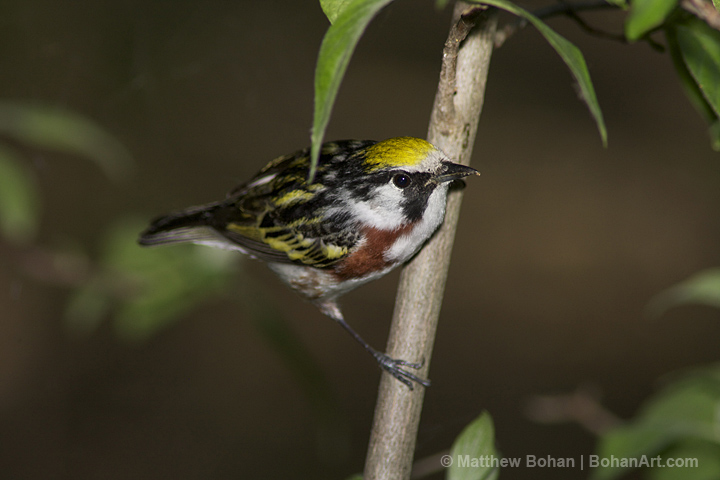
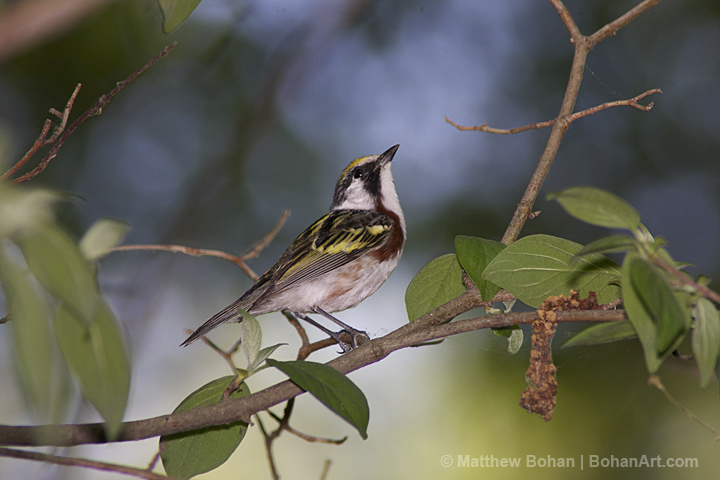






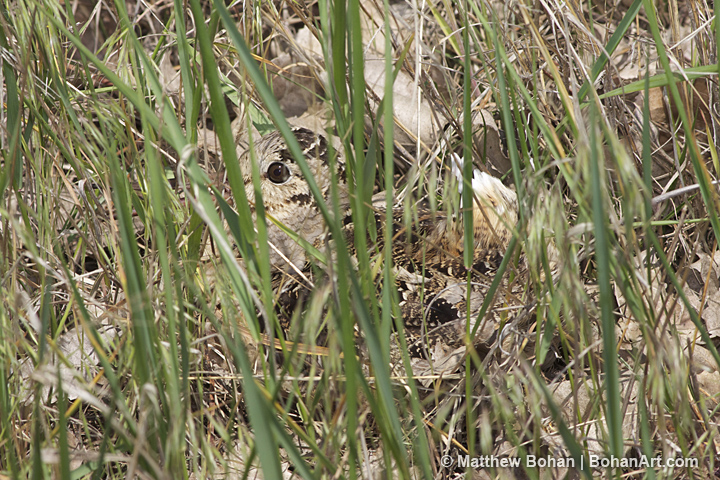

American Tree Sparrow Transparent Watercolor Step-by-Step
I really like the American Tree Sparrow. They are tough little birds who visit our Michigan home in the cold, harsh winters. As Spring finally arrives the smaller Chipping Sparrows replace them. For a very brief time you get the chance to occasionally see the two side by side and appreciate the differences in these look-alikes.
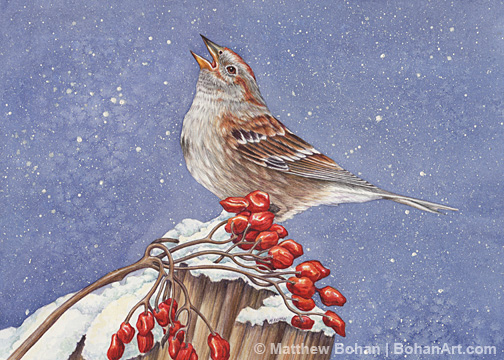
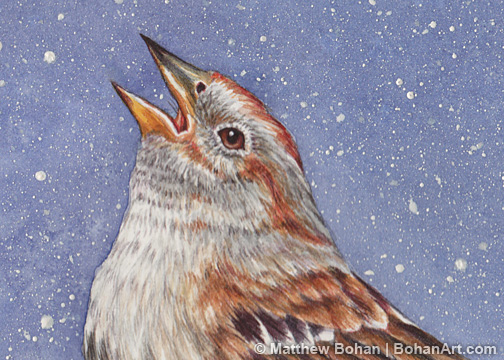
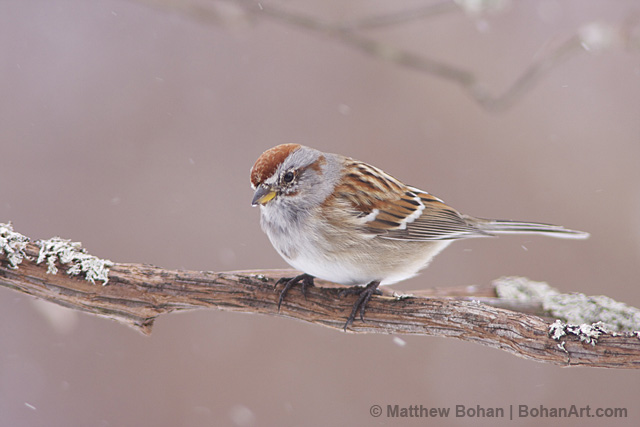
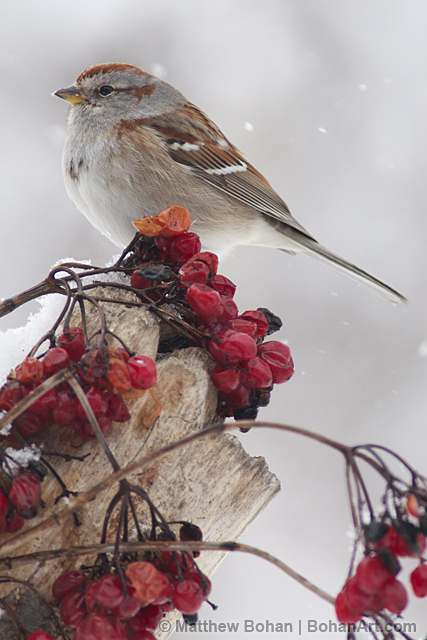
Canon 40D 200-400mm
Common Ground Dove Pencil Sketch p35

The Common Ground Dove is an easy bird to overlook. Besides being one of the smallest species doves by both size and mass, they are cryptically colored and like to sit motionlessly on the ground. I seem to always come across them as they explode out from under my feet while I’m looking for other birds! When you do get a close look at them, they really have some spectacular, subtle coloration despite reading as an overall “dirty grey” in the distance. They have pinky-purples, blue-greys, rich yellows and blacks making they quite beautiful birds! I’m looking forward to painting this one.

The beauty of the pigeons and doves family of birds is often ignored. Perhaps they are just too common and are easily overlooked? One member of this family was incredibly hard to ignore in it’s day. The passenger pigeon was so prolific that its flocks would darken the skies. The massive collections of birds could take hours to pass overhead. Its estimated that some flocks contained several billion birds. In the end, this inexhaustible supply of animal life lost much of its habitat and was hunted to extinction. The passenger pigeon has the sad distinction of being a species who’s extinction is known to an exact date. The last confirmed sighting of a wild passenger pigeon was in 1910. The Cincinatti Zoo had the very last, single captive female named Martha. She died on Sept 1, 1914.
On to more pleasant topics! My favorite birds in this family are the Fruit Doves. These gorgeous fruit-eating birds of Southeast Asia and Oceania come in very parrot-like colors. Males and females are dimorphic, showing different coloration. I’ve only had the fortune of seeing these in zoos, but they never dissapoint. I’ve drawn a bunch in pencil, however black and white doesn’t do them justice. I need to paint one of these!
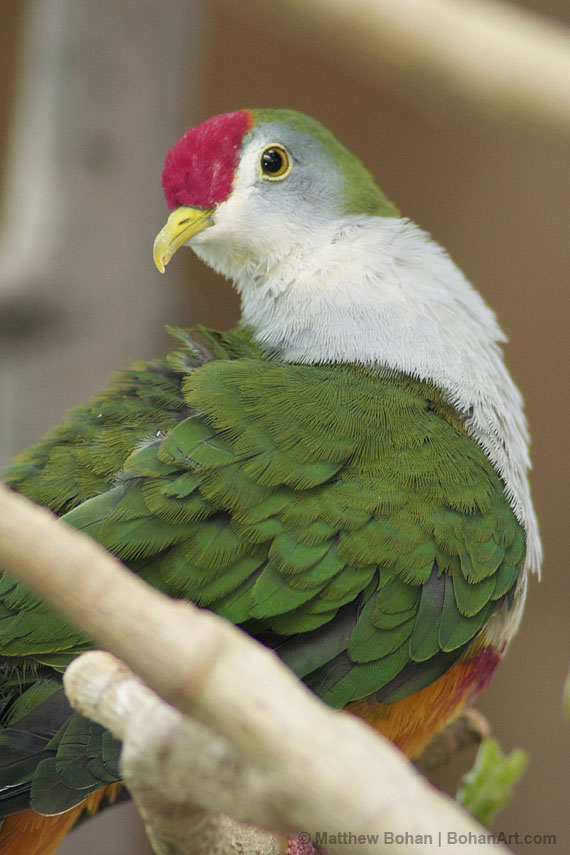
Boat-tailed Grackle Pencil Sketch p34
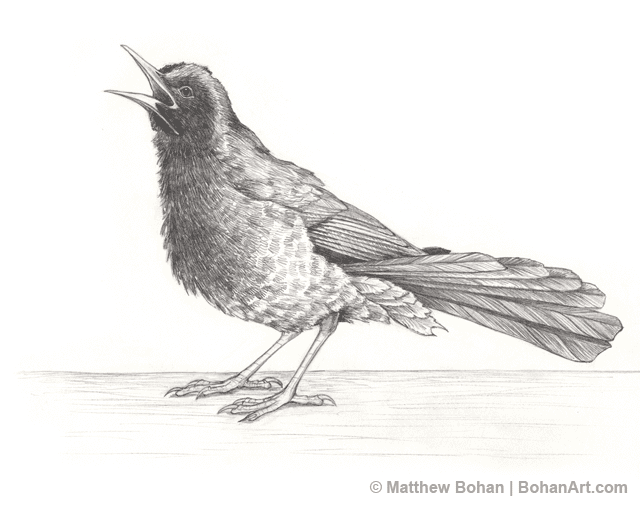
Boat-tailed Grackles shimmer with iridescence. What appears to be jet black fades into beautiful metallic blues, greens and purples. Of course all of that gets lost in a simple pencil sketch! At some point I’ll need to render this in watercolor to brag up some of its colors.
Interestingly, the blue coloration in birds isn’t from pigments at all—it’s a structural phenomenon. Microscopic structures on the feathers cause interference in the reflected lightwaves leaving the feathers. If you look at one of these feathers with backlighting, you’ll see no blue color at all, just a brown-gray. When light is allowed to reflect off that same feather, the magic happens. The colors from iridescent feathers vary in hue depending on the angle they are viewed from, producing a rainbow of possible colors.
Green pigments in birds are usually caused by yellow pigmented feathers with the structural “blue.” The combination of the two makes the feathers seem green. The African Turacos are an exception. These attractive birds have a unique green pigment for a “true green.” Appropriately the green pigment is called turacoverdin, meaning Turaco Green! Turacos also possess a unique red pigment called turacin. These African birds seem to be into proprietary coloration. They aren’t just a pretty face.
Grackles belong to the Icteridae family of birds, which includes the Meadowlarks, Orioles, New World Blackbirds and Cowbirds. Not all of these birds have the greatest reputations, including the Grackles, which can be piggy at feeders.

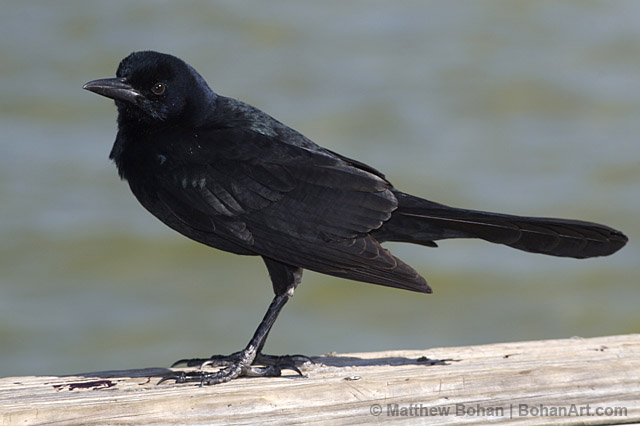
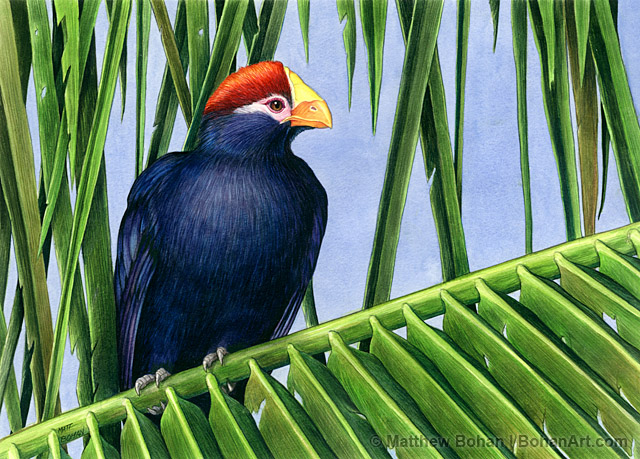
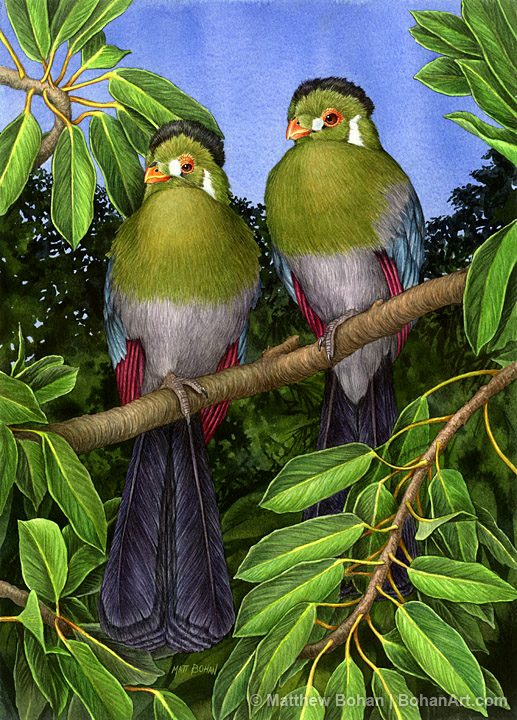
Snowy Day Photos from the Kitchen Window
By the time March rolls around I’m usually ready for the snow to leave. That doesn’t always work out in Michigan. Yesterday we had some beautiful snow. I think many of the early migrants weren’t so happy about the ground being covered. In particular we had an American Robin and a male Rufous-sided Towee that looked particularly insulted by the snowfall. With his options limited, the towee has been coming to the feeder in search of food for a few days now.
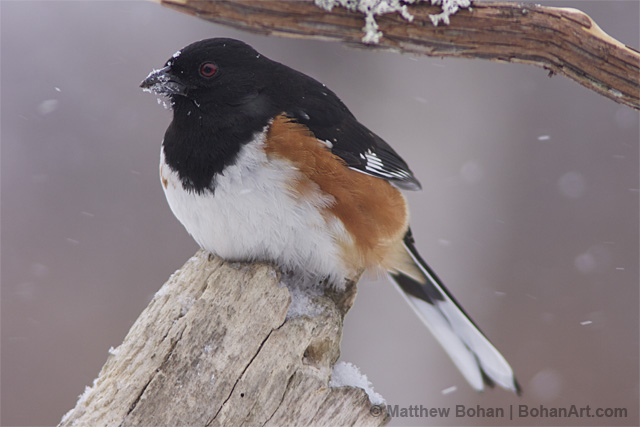


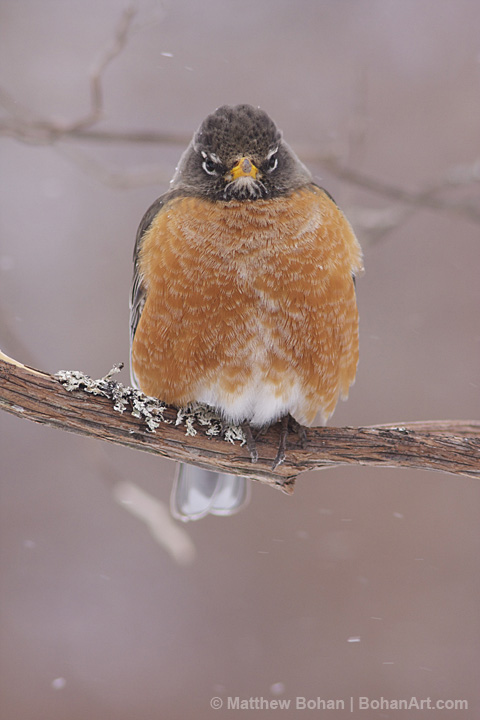
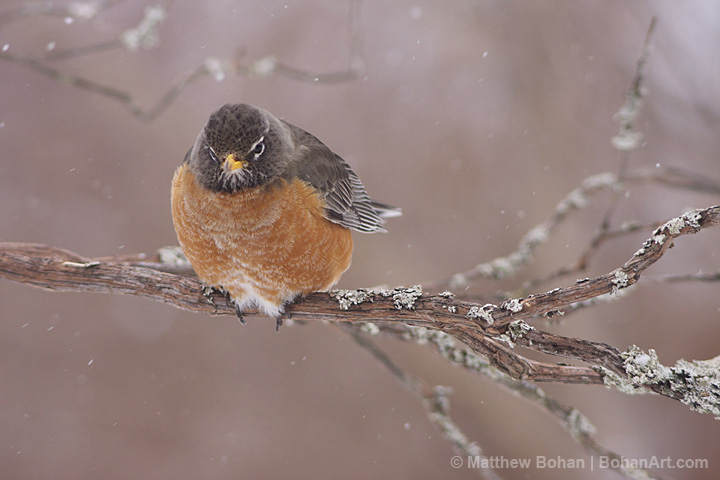



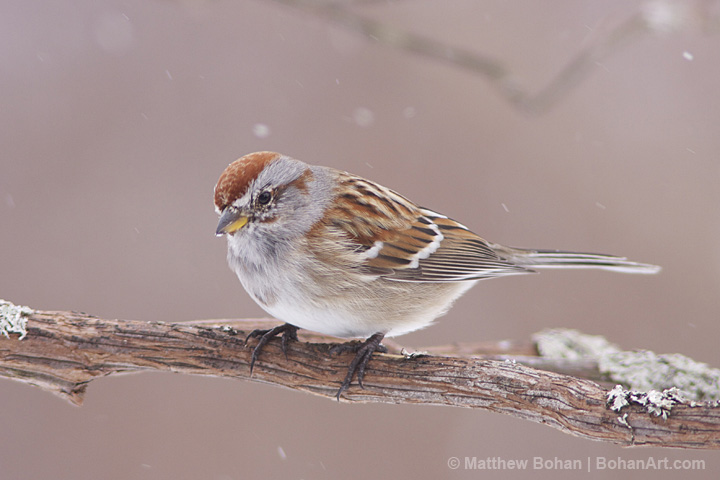

Tricolor Heron Pencil Sketch p33
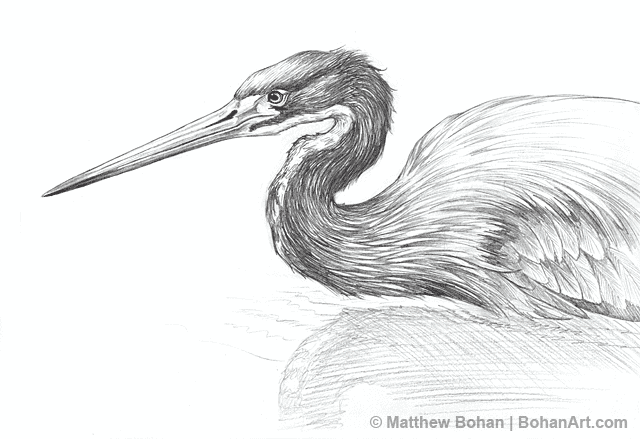
The Tricolor Heron is an underrated bird. Maybe it needs a better name. There are Great Egrets, Great Blue Herons and Snowy Egrets, which all sound rather cool. Then you have a mundane name like Tricolor Heron. Of course I can’t think of a better name. They used to be called the Louisiana Heron, which isn’t particularly thrilling either. Their Latin name is basically the same, Egretta tricolor, so that doesn’t help.
At least the bird itself is spectacular. In breeding plumage the Tricolor Heron seems to have a dozen perfectly designed colors working together. At that time they have a bright blue bill with a black tip, white belly, red eyes, pink feet and body colors ranging from pink-purples to grey-blues and everything in between. Despite all the bright colors, they can hide well in dappled shade while fishing along the shore.
My exposure to these birds has mostly been from trips to the Everglades in the winter. There are few things more fun than watching these beautiful birds on a warm day, especially when you know that it is about -5˚F back in New York (on my first two trips) or Michigan!
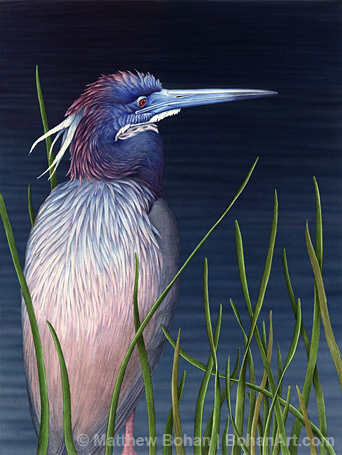
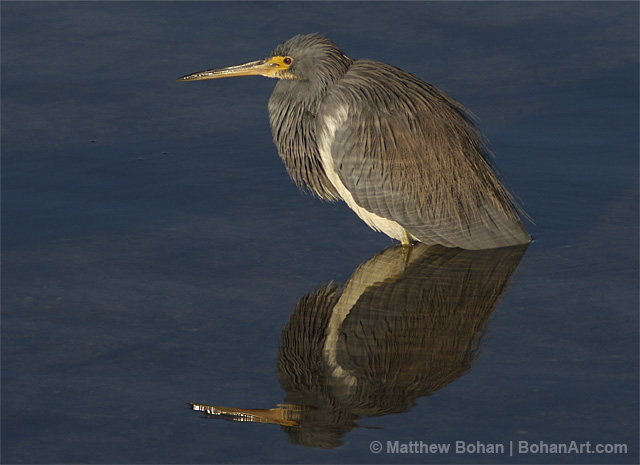
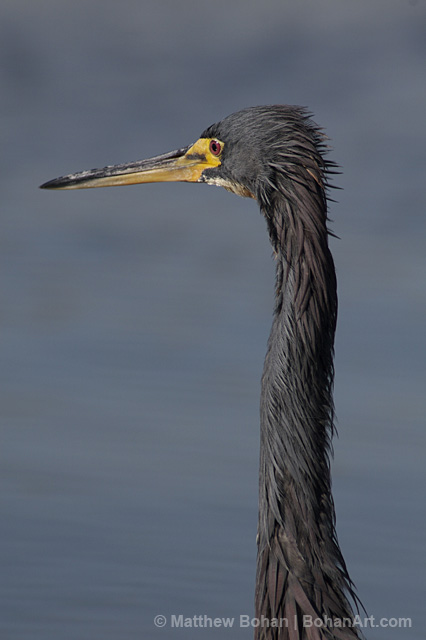
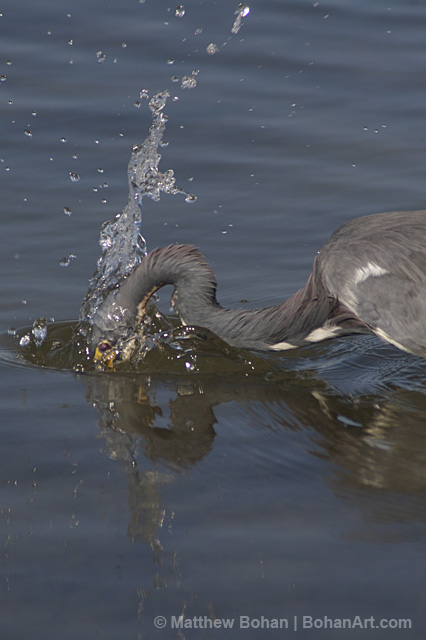
Wading Snowy Egret Pencil Sketch p32
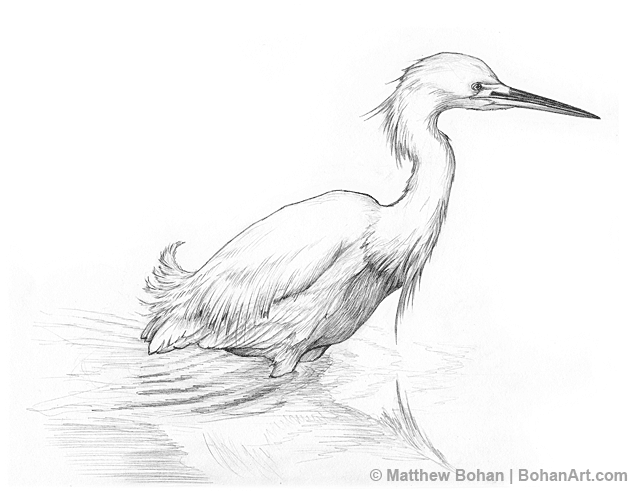
Snowy egrets are undeniably beautiful birds. Typically when I’ve encountered them they were along the shore or wading in the water hunting for fish. On my last trip to Florida, I saw that they don’t always do the fishing for themselves…
My brother Ted and I were photographing a ton of birds in a pond at Little Estero Lagoon in Fort Myers. The birds, including several White Ibis and Snowy Egrets, were dining on fish trapped by the tide. The ibis were dutifully catching their breakfast, but the second they nabbed a fish, a nearby Snowy Egret would excitedly run up and try to steal it. Even though the industrious White Ibis were a bit bigger, the Snowy Egrets often were fast enough to steal the food. Occasionally a few “snowies” would team up on the ibis to push the odds further in their favor. Not the nicest behavior, but exciting to watch.

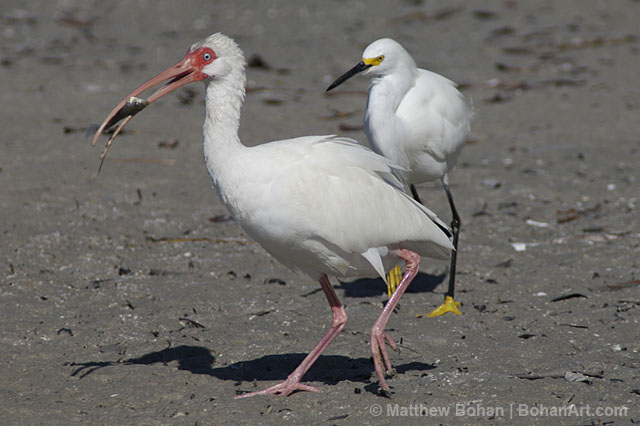

Lab Chow Mixed Breed Dog Transparent Watercolor and Ink Step-by-Step
This was the hardest painting I’ve done in years. It wasn’t big. It wasn’t complicated. It was brutal. Our dog Archie died out of the blue right before Christmas. I started this painting shortly after he died. I’m a huge fan of dogs. We always had dogs when I was a kid. Archie was different than every dog I’ve ever been around. He was virtually perfect in every way.
We got Archie from the local pound when he was about a year old. We picked him up after my pet parrot died. He instantly merged in with the family. That first weekend we took him with us to a local sledding hill. He was totally unfazed by all the people. He was like that. We could bring him anywhere, and he’d just relax and hang out.
To say that Archie was laid back is an understatement. Lets put it this way, I had to mow the lawn around him, then ask him to move so I could finish the spot where he was sitting!
He loved other dogs. He especially loved playing with our neighbors Great Danes and giant Lab Mix. He’d always come back completely covered in dog slobber.
Archie was a speed demon. He would run alongside while we went mountain biking with the kids. He also liked running along while I rollerbladed. Despite his love of running, he really just wanted to be inside most of the time.
Another bonus with Archie was that he barely needed a leash. It was often on more for other people’s peace of mind than our own. We could just let him out the back door with no leash or tie, and he’d do his business and come back in when he was ready. Talk about easy!
Over the years we taught Archie some fun tricks. He loved riding the twisty slides at the park and learned to jump through hoops in the yard. He was tolerant of kids pulling his ears and tail, even though he wasn’t a snuggly dog by nature. He was a saint. He is still very much missed.

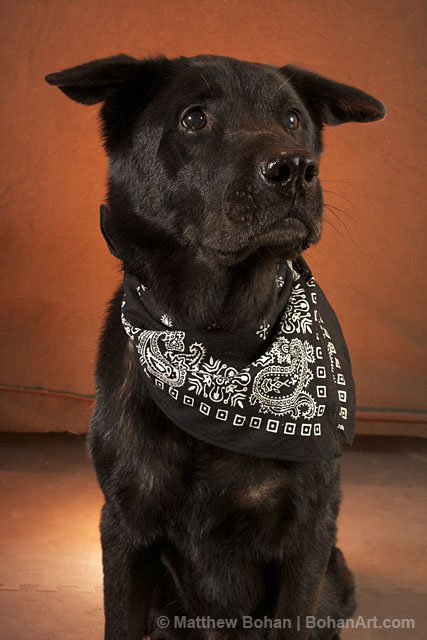
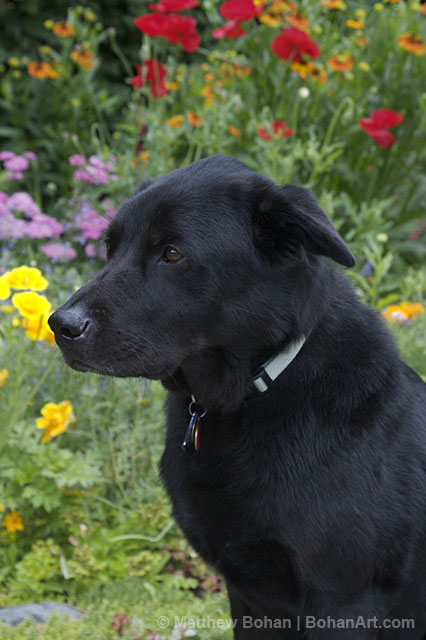
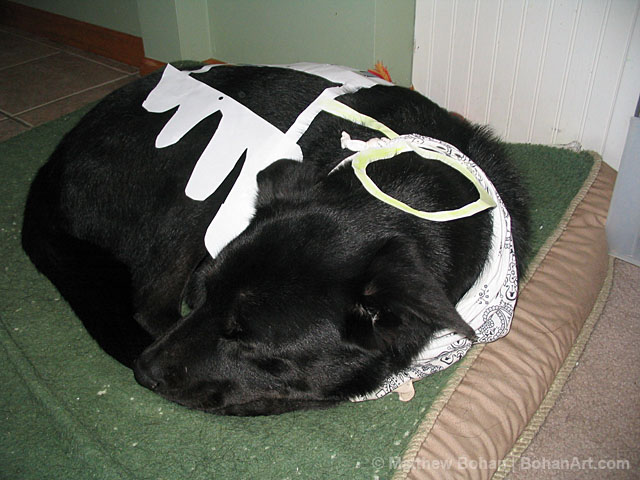
Crab Spider Transparent Watercolor Step-by-step
This summer I gave myself a goal of getting some good macro photos for drawing and painting reference. Last year I concentrated on dragonflies and damselflies. This time around I was especially interested in spiders.
I spent a few days focused on crab spiders. They are similar to the jumping spiders in a few ways. They don’t rely on webs as their main method of hunting. Instead, crab spiders rely on stealth, hiding as still as possible, camouflaged in a flower’s petals. When an unwary insect comes in for a little nectar or pollen, they are pounced upon and eaten. Although they don’t have the massive median eyes of the jumping spiders, crab spiders are still excellent visual hunters.
Once I got into a proper search mode, I was able to find plenty of them to photograph. They were particularly fond of some small rudbeckia flowers. I was able to find many on one plant alone and got plenty of macro shots. I temporarily brought a few of them into the basement where I have a macro set up with several slaved flashes and a large softbox for lighting. Afterwards they were released back into the garden.
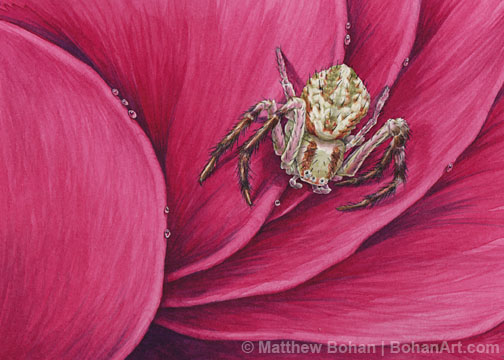
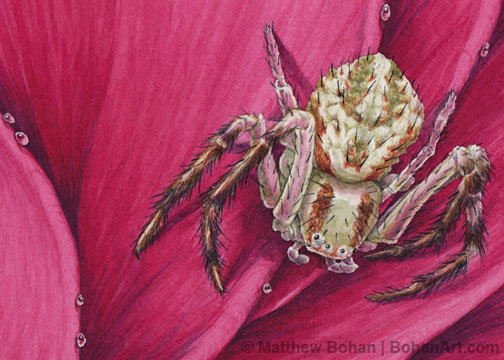
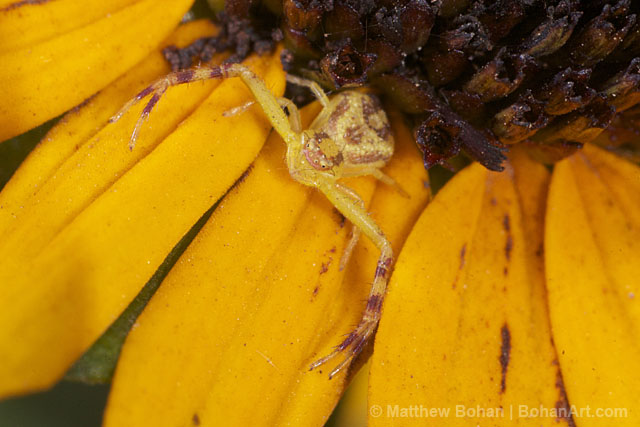
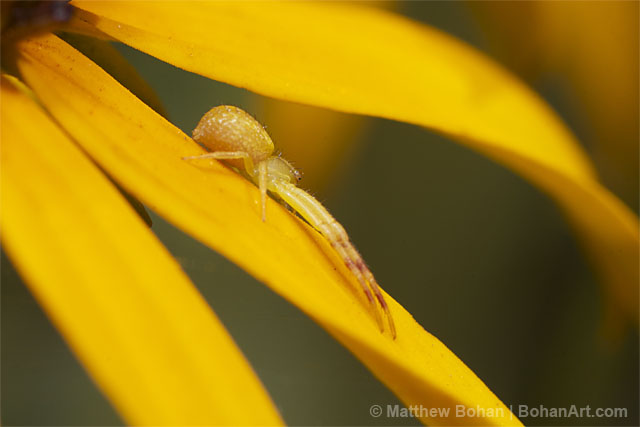
Brown Pelican Pencil Sketch p31

I get a huge kick out of pelicans. They certainly look like they were designed by a committee. They have a huge floating boat of a body, topped off by an ungainly, massive head and net-like bill. Somehow they manage to take to the air and even seem to have a certain gliding grace in flight. They always remind me of the old flying boats like the PBY Catalina or the Spruce Goose. An odd design, but beautiful in their own way.
This sketch is from photos I got while on a trip to Florida with my brother Ted. They were shot in Little Estero Lagoon on a cold February day. In fact, I found out later that it was actually warmer at home in Michigan than it was in Florida! Despite the cold it was a fantastic trip.
The diving pelican photos below are from Sanibel Island. There were several pelicans diving for fish while dolphins also hunted them from below. It was a good day to be a photographer, pelican or dolphin—but not a fish!
Years ago I came across a partial skeleton of a pelican on a beach in Florida. The skull was broken, but the mandible was in good shape. I was amazed at how incredibly flexible that lower jaw was. It would flex side-to-side like spring steel, yet wouldn’t yield at all up and down. That certainly explained how that giant, scooping net of a lower jaw could expand so much and still manipulate a bill full of fish and water with accuracy. It’s one thing to read it in a book and another thing entirely to hold it in your hands.




